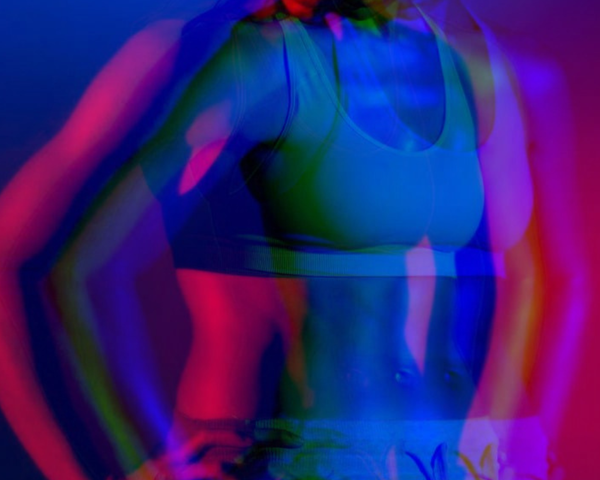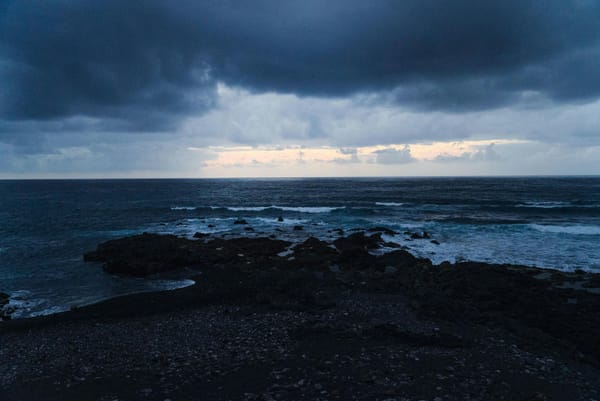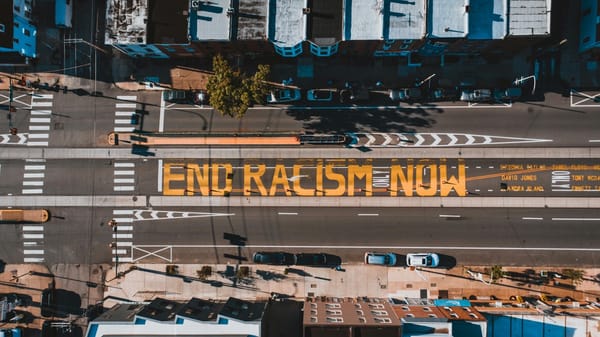What Would Beyoncé Do? How Bey Inspired Me To Wear Blonde Hair Extensions - And Trust My Own Gut
Seeing Beyoncé give the middle finger to the assumption Black women can't wear blonde hair was an awakening.

Access the Audio Read version of this article directly on Spotify for Podcasters.
"I no longer let people be the judge and jury on what works for me, because most of the time, their personal biases influence their opinions."
As a woman with dark skin, I am aware of the assumption that bright colours don't go well with my complexion. The reasoning behind it, though subconscious and mostly unsaid, is to do as little as possible to draw attention to my dark skin by falling back on neutral colours. "I feel like with the red lipstick thing, it all depends on your complexion," said American rapper A$AP Rocky in a 2013 interview with The Coveteur; further insisting, "you have to be fair skinned to get away with that." In a piece for Madame Noire in 2021, Keka Araújo wrote that the idea was “rooted in religious dogma, racism and historical trauma”.
In 2014, Twitter user ‘rarebre3d’ coined the hashtag #BlackWomenInYellow, which got picked up by other users throughout the years, and encouraged thousands of Black women to share vibrant pictures of themselves wearing yellow. Even though dark skinned women have thrown their middle fingers up at the belief they couldn’t wear bright clothes and red lipsticks, it still lingers in the hair department.
In 2017, I told a close relative that for my next hairstyle, I planned to mix black hair extensions with purple. I was immediately reminded that I have dark skin and that purple doesn't go well with my complexion. I knew she did not set out to intentionally bruise my feelings, but as a dark skinned woman herself, her assertion was believable. She must have read the sadness on my face because she quickly assured me that I could go ahead and mix the extensions if I wanted to. But the damage had already been done – hearing her say that as a dark skinned person, some colours just weren't for me stung, and stuck. That time, I used only black extensions when I had my hair done.
My fascination with Beyoncé had started a year prior, and I didn’t know then how much it would help me later in life. When I was 15, I saw her music video for Sorry for the first time, and was captivated. Every time I caught it on TV, I’d watch with unbridled intrigue, and in particular, the scene where she and the models sat on a bus, throwing their middle fingers up.
Beyoncé is more guarded now than in her Destiny’s Child years, probably so she can let go without the rapacious eyes of the public on her – a theory Edward Enninful hinted at in his recent Vogue interview of the star. In her music however, she remains open and vulnerable; we get a glimpse into the different facets of her – a lover, a friend, a feminist, an unapologetic Texan, a boss, a daughter, a mother, a wife. Ironically, on one hand, her art establishes her as an international icon who no one comes close to, while its excellence lies in its honesty and relativity. Something I recognise in the way she styles herself, and how she wears her hair. Unapologetically, in various styles through the different phases of her life, displaying it like a piece of art in itself. In Sorry, one of her braided hairstyles even references the Mangbetu people of Congo in the 1930’s and Egyptian queen Nefertiti.
It is interesting that in some quarters, afro hair is being pushed as “just hair” in an effort to simplify the relationship Black women have with their hair—and there’s an argument to be made there—when hair has been a major topic in our history, and has played an instrumental part in Black and African culture. Black people are shut out of professional spaces because of their hair; in apartheid South Africa, using the pencil test, family members were classified and split depending on if a pencil fell out of their hair; for the Yoruba people of Western Nigeria, hair culturally carries a message – from a woman’s hair, we can tell if she’s single, married, or even royal. Hair is a part of how we show up in the world – it is an expression, a form of self-care and self-adulation. When I was told all those years ago that I couldn’t wear certain hair colours because of my dark complexion, I felt like I had a personal defect, like my dark skin prevented me from being beautiful and expressing myself. It certainly wasn’t ‘‘just hair’’.
In December 2019, without telling anyone, I walked into a barbershop and had the big chop. Although I had always wanted to cut my hair, I didn't know exactly when I would find the courage; let's face it, cutting off all your hair is a big deal and can be terrifying. One evening, I got tired of waiting for the “perfect time”, the one that might never come, and impulsively cut it. As if that wasn’t enough, I also had it dyed brown.
I wasn’t prepared for the result. I loved it, and felt free. My head felt lighter and, more importantly, I looked and felt cool. The transformation strongly affirmed that my hair is mine to wear as I please, regardless of what anyone may say or think. Emboldened, I cut it in another style five months later, then decided to grow it for a while to be able to pixie cut it. During this time, I fell in love with my natural hair. It might seem cliché or patronising to say, but having worn relaxed hair for over 15 years, I had no idea how rich and versatile afro hair could be in its natural state.
It was then that browsing Beyoncé’s Instagram became one of my favourite past times. From the ratio of the frame in each post to the coordination in each row, I could tell there was intention behind it all. During one of my routine check-ins, I stumbled on a beautiful set of pictures of her wearing long blonde braids. It was an awakening – if Beyoncé could look great in blonde braids, so could I!
As the trailer of Homecoming: A film by Beyoncé opens, a voiceover from a Maya Angelou interview is heard over footage of Beyoncé and her dancers preparing for Coachella: “What I really want to do is be a representative of my race, of the human race. I have a chance to show how kind we can be, how intelligent and generous we can be.” Beyoncé is famous for her different variations of blonde hairstyles, but on that particular day, she showed me how beautiful and powerful I could be in blonde braids. In none of the pictures did the hair look out of place on her. On the contrary, it looked like it was made for her, a part of her.
For my birthday, two months later, and for the first time since I cut my hair, I did a goddess blonde braid. Like Beyoncé, I mixed different shades of blonde together to get a perfect blend. It remains the most expensive braid I have ever done, but I don’t regret it. It was gorgeous. When I posted a picture of myself on Instagram, one of my friends commented that it was “screaming Beyoncé”. I had channelled my inner Bey, and it came out unmistakably and in full force. Since then, I have worn blonde braids more times than I can remember and have even gone as far as a plain white blonde a couple times.
When I finally used purple extensions, they were an even lighter shade than I was going for in 2017. They fit, and complemented my skin well.
With fashion and beauty – and this has slowly extended to other aspects of my life – I no longer let people be the judge and jury on what works for me, because most of the time, their personal biases influence their opinions. Instead, in true Bey fashion, I now trust my own gut instinct. Because Beyoncé would believe in her sauce, like when she based a whole project on black and white photography despite an agency telling her it wouldn’t sell. The project, I Am...Sasha Fierce, turned out to be her biggest commercial success. So whenever in doubt, I only ask myself one question: what would Beyoncé do?





